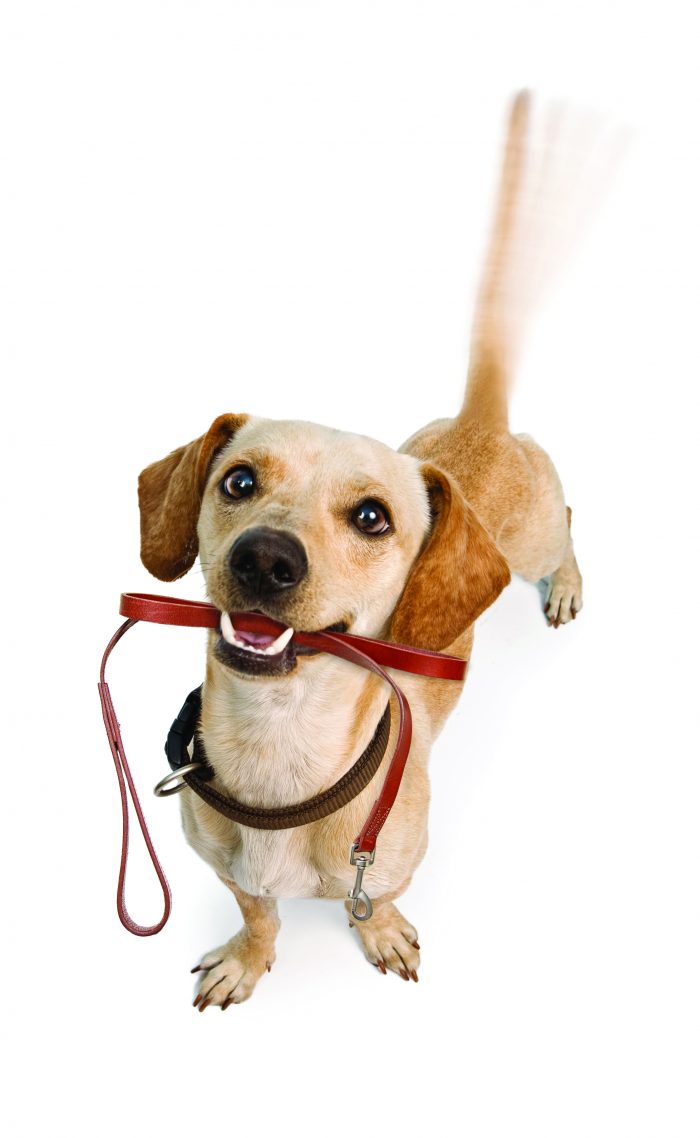
Raising a good dog or rescuing a dog—it all starts on day one. It is important to set up the rules and boundaries right from the start. Many pet owners wait too long to put rules in place, and that makes them harder to enforce.
As a family, figure out what the rules will be for your dog ahead of time. Is your dog going to be allowed on the furniture? Where will the dog sleep? Do you have a certain area you would like your dog to do its business? Are you allowing the dog to jump up on you as a puppy but are not going to be happy when the pup jumps on you when he’s grown? These are the type of questions you should talk about before you bring the dog home.
Consistency is the first key to success. Dogs thrive on structure, so create structure and stick to it. Everyone who lives with the dog must stick to the rules to ensure this consistency is maintained. Everyone should be involved in the care of the dog, even if it’s just taking the dog on one walk a week. A good feeding schedule is a key element in housebreaking a puppy.
Daily structured walks help drain your pup’s energy in a productive way. Create a boundary at your front door, and teach the dog to stay behind that boundary when door is open.
If you practice this daily, your dog will never run out the door when people are coming and going. Teach your dog that calm behavior gets them attention, not excited behavior. Stay consistent, and your dog will approach you and your guests appropriately.
Exercise is another key element to training. Dogs need two kinds of exercise: structured and play. It is important to teach your dog to walk in a structured heel position, as this teaches a dog self-control. The dog is keeping himself in the proper position and, in doing so, is working his mind, which is far more draining than excited walks, where the dog is out front, crisscrossing in front of you and marking every tree it finds. People tend to feel bad if they don’t let their dogs, as they say, “be dogs.” A dog can smell all the scents it passes by without putting its nose to the actual scent, so don’t worry about your dog missing out on all those marvelous scents in the world. In fact, allowing the constant nose to the ground behavior causes the dog to stay in a very excited state of mind, which in turn distracts the dog from its connection with you. The best compromise is the sandwich technique: Always start your walks with structure. Then, find a halfway point or a special place the dog likes and release the dog from its heel position. Allow the dog to smell, potty, roll around … whatever the dog enjoys doing, as long as it does not pull on the leash. A dog should always respect the end of the leash for your safety and its own. After playtime is over, go back to structure for the walk back home.
Even when you play with your dog, add some structure. During a game of fetch, have your dog sit and stay, throw the toy, tell the dog to fetch, and then have your dog bring the toy to you and drop it. That is how you add structure to a game of fetch—and it’s still fun!
It’s the same with tug of war. Allow your dog to tug until its behavior escalates to a too-excited state. Then ask the dog to drop it. This teaches your dog to not escalate its behavior past a certain point and to listen to your command when it does. There are no bad games to play with your dog, as long as you include structure in them.
Socialization is the third key to a well-behaved dog, so put your puppy in a well-structured puppy play class. Puppies need to play with others to learn proper social behavior, very much like children do in preschool.
But socialization isn’t just for the puppy stage—it’s for life. A social pup can turn antisocial if it does not get out of the house or yard to play with others as an adult. Dogs are social creatures that were bred to perform certain behaviors, which means that some dogs need more socialization than others. It’s never too late to socialize a dog. If you rescued an adult dog who exhibits antisocial or shy behavior, contact a reputable trainer who has a lot of experience with this particular problem before attempting to socialize your dog yourself. Walk your dog in different areas, exposing them to different sights, sounds and smells, as well as different types of people. The more things you expose your dog to, the more balanced he will be.
If you follow these three keys you will have a social, well-behaved and balanced dog that you can take everywhere, one that people will not be bothered by, and one you can be proud to have with you. And that means you and your dog will have a fuller life together!
Valerie Masi, owner of Best Paw Forward, can be reached at 760-885-9450 or visit www.bestpawforwarddogtraining.com.


